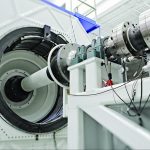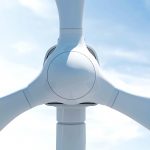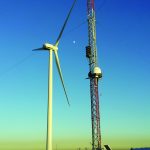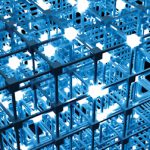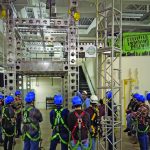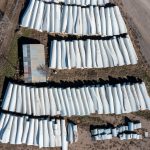Helukabel USA might be one of the few companies that can measure its success in actual miles.
In just the past five years alone, Helukabel has produced and sold more than 6,214 miles of its torsion-rated cable products, according to Kevin Siegel, product and marketing manager for Helukabel.

The company has been supplying cables for industrial/infrastructure applications for almost four decades, and it has been working with the wind industry for 18 of those years.
“Helukabel started supplying cables to the wind market in 2000 because customers were experiencing issues with torsion-rated cables and asked us to create products that could withstand increasingly longer torsion cycle counts,” said Bruce McDonald, Helukabel key account manager. “Once exposed to the vastness of our product portfolio and manufacturing abilities, we continued to work with turbine manufacturers and suppliers with cabling challenges throughout the entire turbine.”

Wind Goals
Helukabel’s goals for the wind industry are to provide a one-stop solution for cable, cable accessories, and pre-terminated harness and assemblies, he said.
“As one of the leading international manufacturers of cables, wires, and cable accessories, we provide system expertise to the wind-power industry focusing on nacelles, cable loops, down towers, and tower control/transformers, including medium-voltage applications,” McDonald said.
By working directly with a wind-turbine company’s engineering, technical, and quality groups, Helukabel develops cables designed for greater flexibility, ease of installation, and lower cost of operating, according to McDonald.
“Our customization program allows customers to use our facilities and engineering to develop, produce, and test cables specific to the customer needs or as a direct solution to a problem,” he said. “By opening our technical departments to our customers, we build strong relationships throughout the industry.”
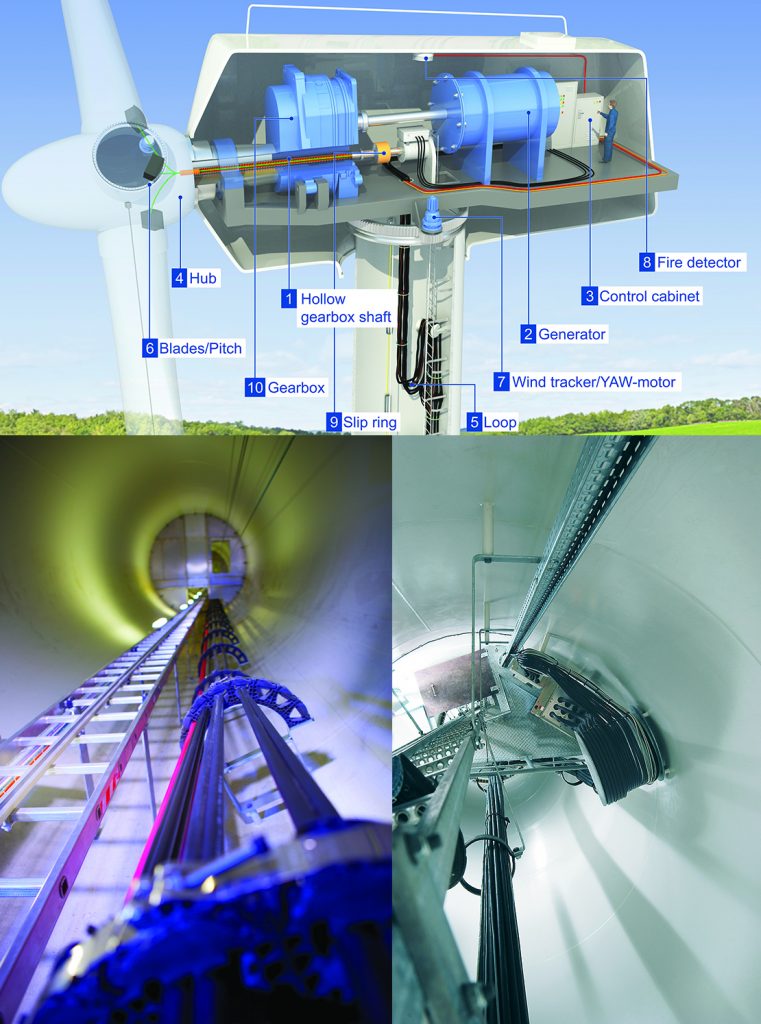
Ideal for Turbines
This has enabled Helukabel to design wind-cable products for moving applications with a high level of vertical integration. This is important when extreme resistance to chemicals, mechanical stress, small bending radii, and high-flexing cycle counts becomes an integral part of maintaining a minimum service life of 20 years, according to McDonald.
“To achieve this, we use special compounds with a wide temperature exposure range,” he said. “All of our torsion-rated cables are a custom-design product and materials selection. We test all our torsion-rated cables in our own vertical torsion test tower to accurately simulate actual wind-farm torsion environments.”
 McDonald stressed that Helukabel uses state-of-the-art manufacturing equipment.
McDonald stressed that Helukabel uses state-of-the-art manufacturing equipment.
“Our computer-controlled processes enable repeated and unparalleled manufacturing accuracy and quality,” he said.
Rigorous Testing
New products are tested in the state-of-the-art test center in Windsbach, Germany, to ensure their suitability for daily use and readiness for standard production, according to McDonald. Stringent quality control standards are upheld with random sample checks carried out during production. The company’s wind cables provide superior performance in climate conditions from -55 degrees C up to 145 degrees C for CCV and offshore applications. They have been internationally approved by UL, CSA, CE, and VDE, and are WTTC rated.
 “Our wind-cable products are used in every aspect of wind-energy equipment production, installation, generation, and transmission to the consumer,” McDonald said.
“Our wind-cable products are used in every aspect of wind-energy equipment production, installation, generation, and transmission to the consumer,” McDonald said.
In addition to producing enough cable in five years to reach from Los Angeles to New York City almost three times, that portfolio of products includes cables that range in size from 30 AWG to 2,000 kcmil (0.055 square millimeters to 1,000 square millimeters), he said.
Helukabel’s dedication to specialty cables for the wind industry has allowed it to partner with many of the world’s leading wind-turbine manufacturers on projects involving cold-weather protection, torsion-related cables, special cable material compounds for higher oil, UV, and abrasion resistance, according to Siegel.
“Helukabel continues to be a pioneer within the cable business with special customer cable arrangements designed to reduce installation time and cost,” he said. “Current projects include field-site evaluation of finely stranded flexible aluminum conductors used in down-tower cable applications and pre-terminated cable assemblies kitted for field-site delivery.”

40 Years of Cable
Helukabel has grown and expanded since it was founded by Helmut Luksch in Hemmingen/Stuttgart, Germany, in 1978. It has quickly grown to establish 29 affiliates around the world in order to service customers in wind and other industries. 2018 marks the company’s 40th anniversary.
“Helukabel’s cable and wire products are at the forefront of the industry because we are constantly challenged by our customers to meet their needs due to continued advancements in technology,” Siegel said. “Our engineering skills are widely recognized as some of the best in the world. This attention to quality makes Helukabel an easy choice for those wind companies looking for high-quality cable products and cable accessories.”

















